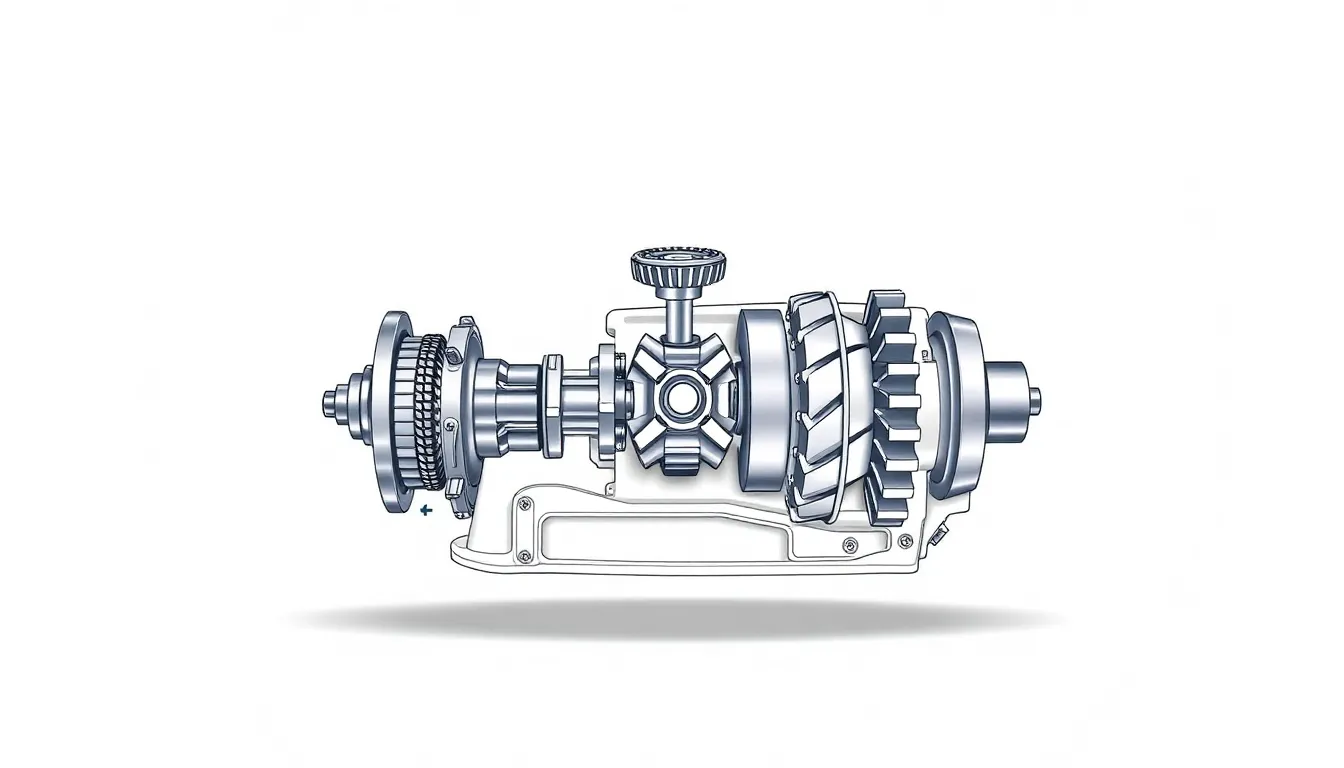Have you ever tried to steer a car that felt like it was steering itself? If you have, you probably encountered some steering gear box drama. Understanding this crucial component can make all the difference between smooth sailing and an existential crisis at the wheel. Strap in as we jump into the intricacies behind the steering gear box diagram, making life in the driver’s seat a tad bit easier.
Table of Contents
ToggleUnderstanding the Steering Gear Box

The steering gear box, simply put, is the heart of a vehicle’s steering system. It plays a pivotal role in converting the rotational motion of the steering wheel into the linear motion required to turn the wheels. Imagine it as a translator, quietly working behind the scenes to help communication between driver input and vehicular response.
Your steering gear box may not be the most glamorized part of your car, but without it, turning corners would be a herculean task. The gear box also plays a crucial role in offering precision, stability, and control during driving. Without a functioning steering gear box, you’d feel like you were trying to navigate through a twisty maze with a blindfold on. Yikes.
In the simplest terms, understanding how the steering gear box operates helps drivers anticipate any potential issues before they lead to more significant, costly repairs. And who doesn’t want to save a fortune at the mechanics? It’s a win-win.
Components of a Steering Gear Box
Diving deeper, let’s dissect the anatomy of the steering gear box. It’s not just a mysterious black box: it comprises several well-thought-out components that collaborate to make driving smoother. Here’s a quick overview:
- Input Shaft: This connects to the steering wheel. When you turn the wheel, the input shaft responds accordingly.
- Gear Mechanism: Often comprising a series of gears, this part converts the rotational motion into linear motion. Think of it as the mini-magic factory inside your gear box.
- Pitman Arm: This connects the gear mechanism to the steering linkage, helping in maneuverability.
- Idler Arm: The unsung hero, it stabilizes the steering system during turns.
- Linkage: This connects the steering mechanism to the wheels, ensuring the desired movement gets executed.
Each of these components plays a vital role in delivering a seamless driving experience. Keeping an eye on their condition can save you from unexpected surprises on the road.
Types of Steering Gear Boxes
Steering gear boxes come in several varieties, each designed to meet different needs and preferences. Here are the main types you should know:
- Recirculating Ball Steering Gear Box: Commonly found in older vehicles and trucks, it uses ball bearings to minimize friction. This type offers good feedback and is generally robust.
- Rack and Pinion Steering Gear Box: A favorite in most modern cars, it combines a gear (the pinion) with a flat bar (the rack) to provide quick and responsive steering. The simplicity of this design makes it efficient.
- Power Steering Gear Box: Utilizing hydraulic or electric assistance to boost the effort required to turn the steering wheel, this type reduces strain and enhances driving comfort.
- Manual Steering Gear Box: This traditional option requires considerable driver effort. It’s straightforward but lacks the benefits of modern power-assisted systems.
Understanding these varieties gives drivers the edge in selecting vehicles that fit their steering preferences.
How to Read a Steering Gear Box Diagram
Reading a steering gear box diagram might seem as daunting as translating hieroglyphics, but it’s easier than it appears. Here are some straightforward steps to help demystify the process:
- Familiarize Yourself with Symbols: Each component in the diagram will have a designated symbol. Recognizing these symbols is your first step to understanding the entire assembly.
- Identify Key Components: Start by locating crucial parts like the input shaft, gear mechanism, and Pitman arm. Understanding where each fits in the overall layout helps build context.
- Follow the Flow: Diagrams often indicate the flow of motion. Following the arrows or lines connecting various components reveals how they interact with one another.
- Look for Annotations: Many diagrams include notes explaining specific functions or parts. Don’t skip these: they can offer valuable insights into the gear box’s mechanics.
- Compare with Real Parts: If possible, reference the diagram against an actual steering gear box. Real life often provides the best context for understanding technical diagrams.
Common Issues and Troubleshooting
Even the most well-engineered components can face issues. It’s essential to identify them early to avoid larger problems down the road (pun intended). Here are some common issues related to steering gear boxes:
- Difficulty Steering: This could indicate a problem with the power steering system, possibly due to low fluid levels or a failing pump.
- Noisy Steering: Clunking or grinding noises often suggest worn components within the gear box, calling for immediate inspection.
- Vibrations: If the steering wheel shakes or vibrates unexpectedly, it could signal misalignment or a malfunctioning gear box.
- Fluid Leaks: Seeing puddles under the vehicle might point to leaking seals or hoses, often necessitating a cautious examination.
Regular maintenance checks and early troubleshooting can help mitigate most steering gear box issues, ensuring smoother drives and prolonged vehicle life.









